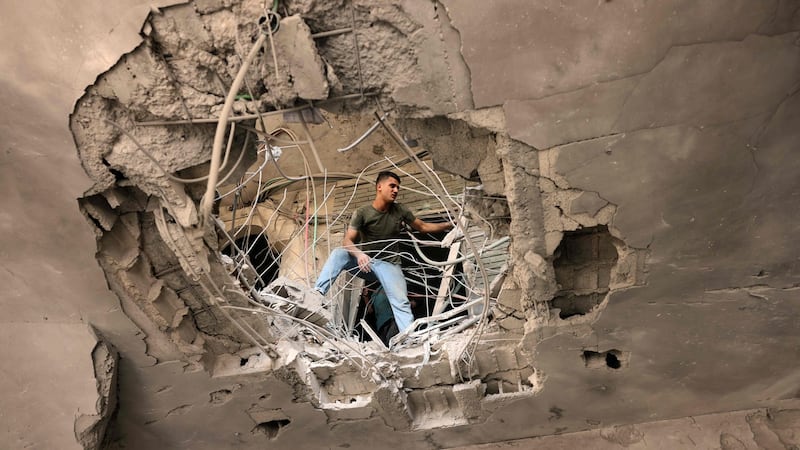Two million Gazans began on Friday to take stock of what is left of their lives after the latest bout of bombs, rockets and shells exchanged in the unending war between Palestinians and Israelis.
During 200 hours of Israeli air strikes and shelling, more than 240 Palestinians were killed, including 66 children, 1,700 were wounded and 58,000 left homeless, according to figures from various UN agencies.
Hamas and Islamic Jihad fired 4,000 crude home-made rockets into Israel killing 10 Israelis, of whom two were children, and two Thai workers.
Losses in Gaza were estimated by the UN at $37 million (€30 million) a day over the 11 days of hostilities, which were neither a war nor fighting but volleys of deadly fire.
Gaza’s doctors and nurses lack medical supplies to treat the injured as well as Covid-19 patients since the sole facility for treating the pandemic was destroyed in Israeli bombing.
World Health Organisation regional director Ahmed al-Mandhari said the closure by Israel of entry and exit points for patients and humanitarian health teams "and the severe restrictions on the entry of medical supplies is exacerbating this public health crisis".

Air strikes
The Gaza-based Palestinian Centre for Human Rights reported that Israeli air strikes had destroyed streets and crossroads, obstructing the movement of vehicles and ambulances, especially on roads leading to Gaza City's Shifa hospital, the largest in the strip.
A UN training centre, six hospitals, 10 primary healthcare centres, the sole Covid-19 testing laboratory, the Islamic University and 50 schools have been damaged while 58 schools run by Unrwa, the agency caring for Palestinian refugees, are sheltering 66,000 who lost or fled their homes.
Unrwa has issued an appeal for $38 million to cover the most urgent needs of Gazans and West Bank residents caught up in the violence.
Among the 184 residential and commercial properties that have been destroyed, six were tower blocks housing 33 media outlets, doctors’ offices, businesses, and households which have been brought down by Israeli air strikes after residents were warned to evacuate.
Flattened
Gaza’s only book shop, as well as other shops, restaurants, workshops and a factory making plastic pipes for water and sewage have been flattened.
Gaza City’s mayor, Yahya al-Sarraj, told al-Jazeera that the large number of civilian deaths and the heavy damage inflicted on the Gaza strip was intended to demoralise Palestinians but, he found, when meeting people who had lost homes, that they “know this offensive is not just a war on Gaza, but an extension of Israeli occupation policies in the West Bank and Jerusalem”.












